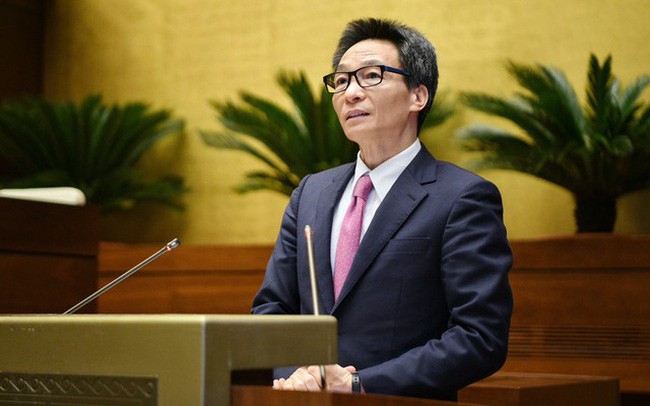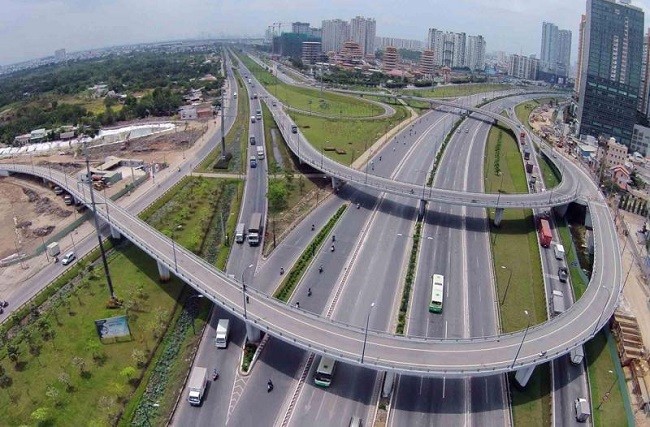(VOVWORLD) - Deputy Prime Minister Vu Duc Dam presented a report titled “Orientation of the National Master Plan for the 2021-2030 period with Vision to 2050” at a national conference last week. The Master Plan shows Vietnam’s determination to create a new momentum for national development.
 Deputy Prime Minister Vu Duc Dam presented a report on “Orientation of the National Master Plan for the 2021-2030 period with Vision to 2050” at a national conference (Photo: Nhat Bac/VGP) Deputy Prime Minister Vu Duc Dam presented a report on “Orientation of the National Master Plan for the 2021-2030 period with Vision to 2050” at a national conference (Photo: Nhat Bac/VGP) |
Deputy Prime Minister Dam said a national master plan is essential to clearly define the national development space in a coordinated, unified manner to create a momentum for rapid, sustainable national development.
In October this year, Deputy Prime Minister Le Van Thanh signed the National Master Plan for the 2021-2030 period with a vision to 2050, which was later submitted to the National Assembly for consideration and approval.
 (Photo: VGP) (Photo: VGP) |
Vietnam aims to become a developing country with modern industry by 2030
Under a resolution on the National Master Plan, Vietnam will strive to become a developing country with modern industry and high middle income by 2030 and develop an effective, unified, and sustainable development space.
Addressing the conference to appraise the Plan, Prime Minister Pham Minh Chinh said: “The plan must embrace innovative thinking and a strategic vision. This innovative mindset will create resources and momentum. With a strategic vision, the plan can point out different potential and outstanding competitive advantages in order to work out solutions to promote our internal resources. Internal resources are the foundation, the long-term strategy, and a decisive and important factor, while external resources are important breakthrough resources."
Under the Master Plan, Vietnam aims to achieve an average GDP growth of 7% per year. To this end, the country will promote the advantages of each region, establish 6 socio-economic regions and 2 key economic regions in the north and south, focusing on tapping the potentials of Hanoi and Ho Chi Minh City, the North-South economic corridor, the Lao Cai-Hanoi-Hai Phong-Quang Ninh economic corridor, and the Moc Bai-Ho Chi Minh City-Vung Tau economic corridor, with modern, coordinated infrastructure in order to boost national economic growth.
Cao Viet Sinh, former Deputy Minister of Planning and Investment, said: "I suggest we separate large regions into northeast and northwest regions in the mountain mid-land area, and north-central and central coastal regions in the central area, while boosting the link between the south-central region and the Central Highlands to create a gateway for the Central Highlands to the sea."
In the National Master Plan, Vietnam also intends to strengthen national digital transformation, develop digital government, digital economy, and digital society, and expand the digital economy to produce 30% of GDP.
By 2030, Vietnam's population will reach 105 million people and its Human Development Index (HDI) will stand above 0.7. Vietnam aims to have its education and healthcare sectors reach the advanced level for the region.
Vietnam set to become a developed, high income country by 2050
Under the National Master Plan, by 2050 Vietnam will become a developed, high-income country with a just, democratic, civilized society, a coordinated modern infrastructure, harmonious and sustainable development between regions, effective exploitation of its potentials and strengths, and a smart, modern urban system. Vietnam also aims to preserve its national cultural identity and promote its national values, ensure a social environment in harmony with nature, and develop toward a circular, green economy.
In the 2031-2050 period, Vietnam will strive for a GDP growth rate of 6.5-7.5%/year, a GDP per capita of 27,000 to 32,000 USD, a high HDI, a happy life for its people, and strong national defense and security.
Vietnam has set out four key tasks for national development: building a basic framework of national infrastructure, developing major economic regions to serve as locomotives for national development, establishing economic corridors and industrial-urban-service belts in dynamic regions, and expanding urban areas.